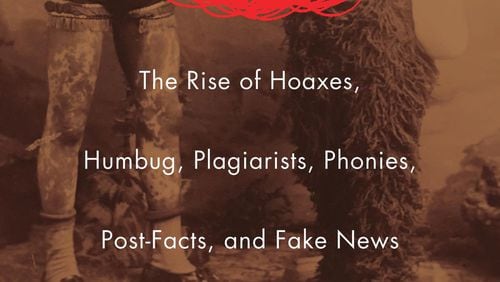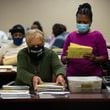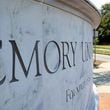In a post-truth America, poet Kevin Young, most recently author of “Blue Laws: Selected and Uncollected Poems 1995-2015,” assumes the daunting task of cataloguing America’s obsession with deception in his new nonfiction book, recently long-listed for the National Book Award, “Bunk: The Rise of Hoaxes, Humbug, Plagiarists, Phonies, Post-Facts, and Fake News.”
The history of the United States, as it turns out, can be traced through the ways in which tricksters and charlatans manipulate reality, from P.T. Barnum’s improbable charades during his 19th century circus reign, to Donald Trump’s explosive outcries of “fake news.”
“Bunk” is a dissection of the zeitgeist, psychology and socio-political climate that give rise to the hoax. Since its origins, the hoax has preyed upon its audience’s racism, xenophobia and bigotry against the disabled, and Young diligently explores how marginalization of “the other” breathes life into deceit.
“Do so many hoaxes involve race – indeed, seem to require race in order to properly function – because race is the ultimate white elephant?” he asks. African-Americans, Africans, East Asians, Native Americans and Aborigines feature prominently in hoaxes that entice white witnesses’ horror and fascination. (For brown, black, red and yellow skin embody the “mysterious” and the “exotic.”) “The hoax’s divisions are always long, and wide, profiting off the fragments and fractures of society and proliferating in times of tension.”
The hoax’s racist American legacy spans from 1835, when P.T. Barnum touted an elderly Black slave named Joice Heth as George Washington’s nursemaid, to the 2015 exposure of a white woman, Rachel Dolezal, then regional head at the NAACP, as a “black pretender.”
Perhaps nothing epitomizes the contemporary race-based hoax more than the slur-laden presidential campaign of Donald Trump. “[F]ake Indians, Mexican rapists, violent Negroes and their neighborhoods, invisible Asians,” writes Young. “These are the very same persistent fictions that the pseudoscience of the 19th century poured fourth, trickled down, and traded up to our present day.” Indeed, aside from Jayson Blair, the notorious star reporter for the New York Times who fabricated several stories, most notably about the 2002 D.C. sniper killing spree, few African-Americans have constructed the most notorious hoaxes. “Does it bear asking why, excepting some key imposters, there aren’t too many noteworthy black hoaxes other than journalists? Is it because rarely are black writers afforded such unerring authority, even today?”
Though “Bunk” is a scholarly work (the annotated bibliography and index are comprehensive), it’s made entertaining by Young’s exasperated asides over the sheer endlessness of race-based material on his chosen subject. “I thought I’d nearly finished this book – filled with hoaxers and imposters, plagiarists and phonies – but as soon as I had sent a draft to my publisher, elated and relieved, Rachel Dolezal raised up her faux-nappy head. Now I have to take time to write about her too?” Even former “New Republic” reporter, Stephen Glass, made more infamous in the movie “Shattered Glass,” who fabricated parts or all of numerous stories, relied on using gross stereotypes of wholly imaginary people of color to populate his articles. “By now,” writes Young, “I have grown more than frustrated, weary I suppose, to find yet another hoax centered on race.”
The literary hoax features prominently in Young’s book and it’s no wonder why. The fake memoir is an irresistible entrapment, one that’s pulled the wool over the eyes of millions of readers. Coincidentally, book-revivalist extraordinaire Oprah Winfrey has fallen into the role of inveterate de-bunker after discovering that some of the memoirs she recommended were fiction. These include, among others, Herman Rosenblat’s “Angel at the Fence,” which told the story of his survival of Buchenwald during the Holocaust but added heartfelt though completely false details about how he met his wife, and Laurel Willson’s “Satan Underground,” which revealed the (fictional) abuses she endured at the hands of a Satanic cult. And then there’s the infamous “Million Little Pieces” debacle from 2006 that resulted in a prolonged (and complicated) apology from author James Frey, who fabricated much of his memoir about drug addiction and his arduous road to recovery.
Yet truth tellers do not hold the monopoly over the literary hoax. Novelists, in the form of plagiarism, get in the act, too. In 2006 (a banner year for the literary hoax, it seems), Harvard student Kaavya Viswanathan admitted to borrowing copious passages from Megan McCafferty, Tanuja Desai Hidier and Salman Rushdie for what was to be her breakout book, “How Opal Mehta Got Kissed, Got Wild, and Got a Life.” The book was quickly pulled, the movie deal extinguished.
How does the hoax continue to survive generation after generation, to reinvent itself anew? Will the hoax continue to exist in perpetuity? Young posits that no end is forthcoming – in part because the burden of proof is too high. The military and the media greatly distorted the 2003 rescue of soldier Jessica Lynch in Iraq, and though she did not invent the gross exaggerations, “to this day, she is often blamed for them.”
“Bunk” is the thrilling fun house at the state fair one wishes to never exit. And though Young had hoped to end the book on an optimistic note, “[t]o be able to say that though we’ve experienced a tsunami of hoaxes, the tide has crested and now we’re on the other side,” it seems the road to realism is paved with smoke and mirrors. It will take some time to clear the air. “The facts are on our side,” muses Young, “let’s hope the fictions once again will be too.”
NONFICTION
‘Bunk: The Rise of Hoaxes, Humbug, Plagiarists, Phonies, Post-Facts, and Fake News’
By Kevin Young
Graywolf Press
576 pages, $30
About the Author






